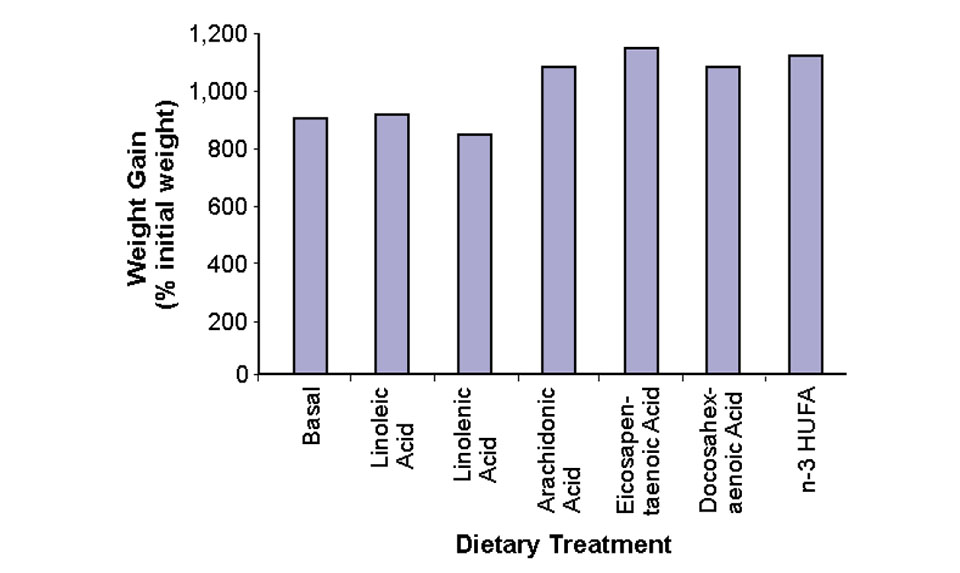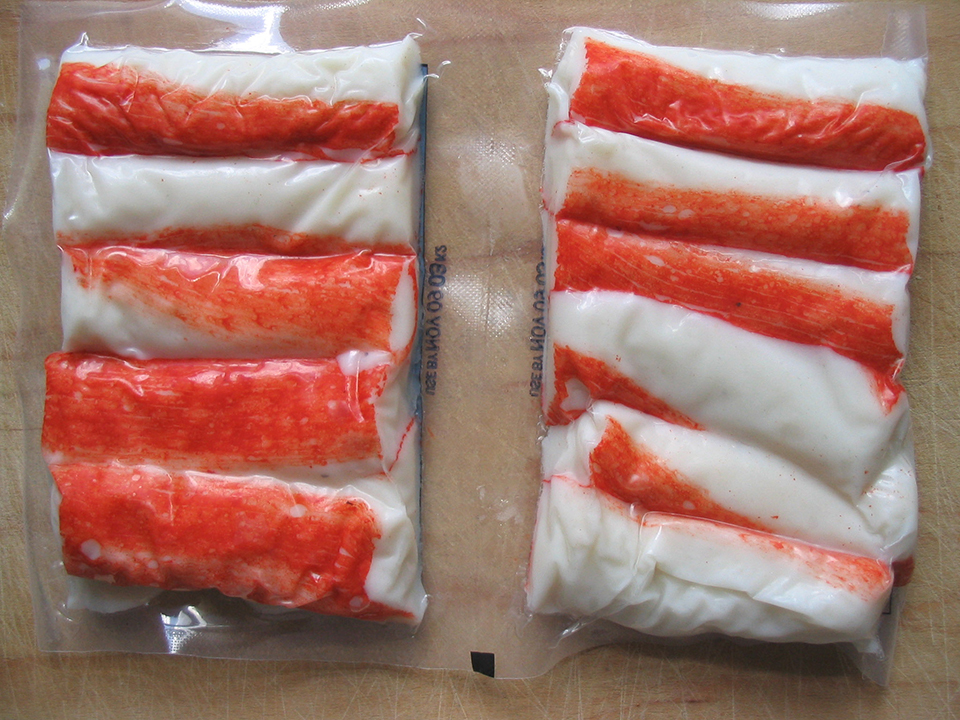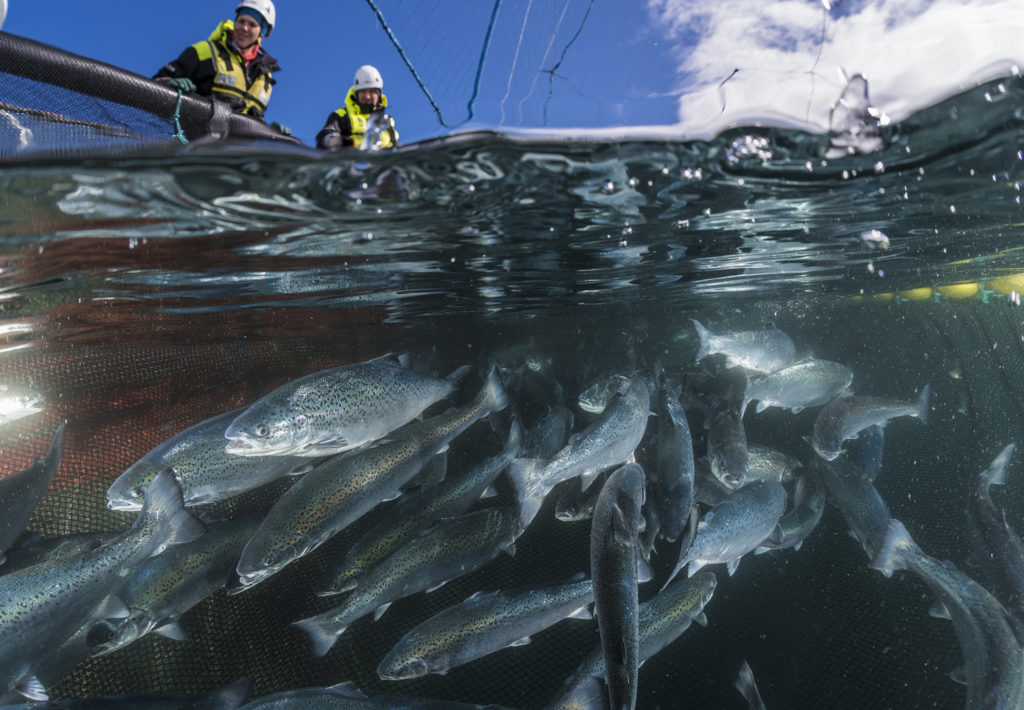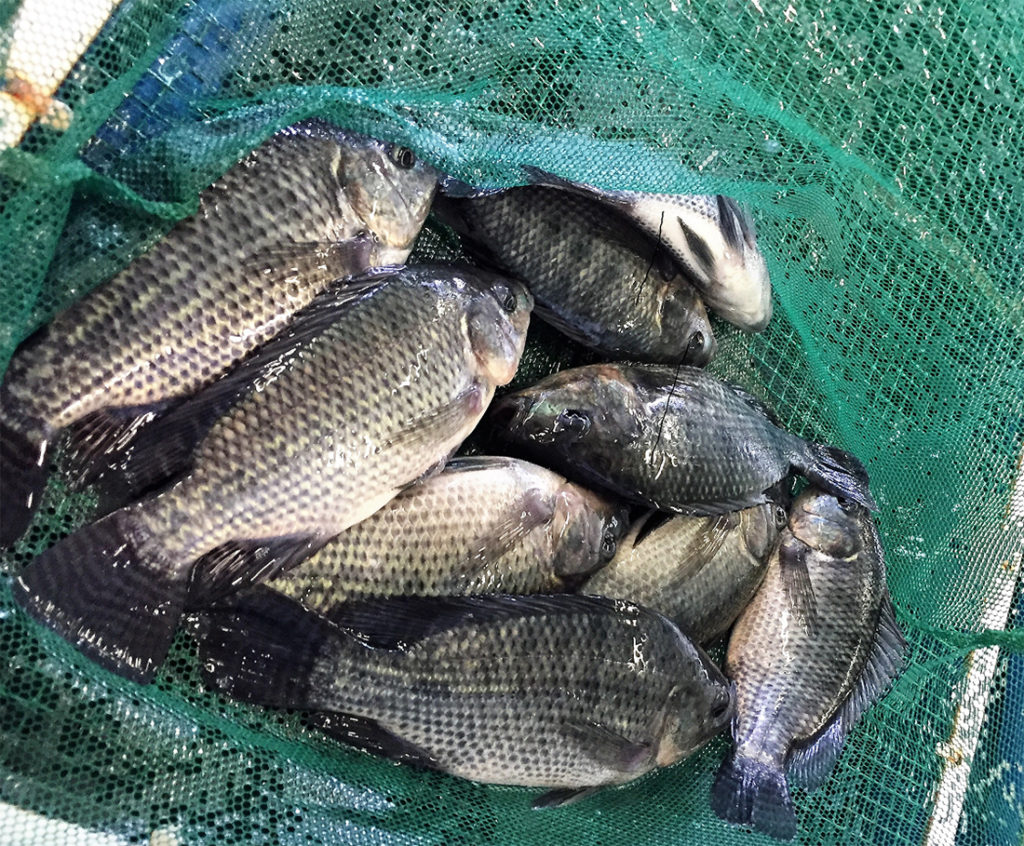Requirements for particular nutrients vary between species
Dietary lipids are necessary for the growth, survival, and normal metabolic functions of all organisms. Among them, triglycerides, also called triacylglycerols, are the main form in which humans ingest and accumulate fat. Typically, when excess calories are ingested and not used immediately, they are converted to triglycerides and transported to fat cells for storage. On the other hand, fatty acids, another type of lipids, are major components of cell membranes.
Many organisms, including shrimp, are not capable of biological synthesis of some fatty acids. These essential fatty acids must be supplied in the diet. Both triglycerides and fatty acids have caught the eyes of shrimp nutritionists. Various advances have been made in this field of study.
Recommended dietary levels
In many early studies, kuruma prawns (Marsupenaeus japonicus) and Indian shrimp (Fenneropenaeus indicus) were the most studied shrimp species. As evaluated by growth response and survival, the levels of dietary triglycerides recommended by researchers for these shrimp varied 6 to 8 percent. Triglycerides of marine origin, such as fish oil, were reported to have greater nutritional value than triglycerides of vegetable origin like coconut oil.
Researchers observed an interaction between dietary triglycerides and other nutrients and sources of energy. For example, requirements for triglycerides can be overestimated when protein requirements are not met. For dietary fatty acids, it was found that penaeid shrimp could not synthesize long-chain (18 carbon atoms or longer) polyunsaturated fatty acids (PUFAs) of the linolenic (omega-3) or linoleic (omega-6) families, and they are not able to elongate them to highly unsaturated fatty acids (HUFAs).
In general, omega-3 fatty acids had superior nutritional value over omega-6 fatty acids. When comparing HUFAs and PUFAs, the former offered greater nutritional quality, exemplified by the HUFAs docosahexaenoic acid (DHA) and eicosapentaenoic acid (EPA), which supported better growth and survival than the PUFA linolenic acid.
After 1997, research on triglycerides and fatty acid nutrition focused on the two most commercially important cultured species in the world: black tiger shrimp (Penaeus monodon) and Pacific white shrimp (Litopenaeus vannamei). These studies provide a better understanding of the qualitative and quantitative requirements for these nutrients.
Neutral lipids in feed
Considering that free fatty acids, ethyl esters, methyl esters and triglycerides have been indistinctly used in studies of lipid nutrition in shrimp, one study evaluated their value as a source of neutral lipid in experimental feeds for P. monodon. Shrimp fed triglycerides had higher weight gain (94 ± 6 percent) than those fed free fatty acids (84 ± 7 percent), ethyl esters (73 ± 7 percent), or methyl esters (54 ± 5 percent). It was concluded that neutral lipid in the form of triglycerides should be preferred over other lipid types and that free fatty acids could be used for fine adjustment of the fatty acid profile.
Source of dietary triglycerides
Researchers further examined the value of a variety of oils as sources of triglycerides in shrimp feeds. In two independent studies with Pacific white shrimp, an identical pattern of the growth-promoting effects of oils was reported. Menhaden oil best promoted growth, followed by linseed oil, soybean oil, and coconut oil.
However, results of a different nature were found for black tiger shrimp. They had significantly greater growth when fed linseed oil, canola oil, or soybean oil, as compared to cod liver oil or lard.
These findings showed that the nutritive value of the oils employed was dependent upon the species, and the concept that marine fish oils promoted better growth than vegetable oils was no longer valid.
Activity of omega-3, omega-6 fatty acids
A research study compared the nutritional values of dietary linolenic acid and linoleic acid with arachidonic acid, eicosapentaenoic acid, and docosahexaenoic acid, as well as omega-3 HUFAs in combination, all included at 0.5 percent of the diet. All the HUFAs produced significantly greater weight gains than the PUFAs (Fig. 1).
According to this study, L. vannamei satisfied their requirements for essential fatty acids with HUFAs from either omega-3 (EPA and DHA) or omega-6 (e.g., arachidonic acid) families. Regardless of the families they belonged to, the nutritional values of fatty acids for this species appeared to be determined by chain length and degree of unsaturation, differing from reports for other penaeid shrimp species in which fatty acids of the omega-3 family had greater essential values than those of the omega-6 family.

Quantitative requirements for essential fatty acids
The estimated quantitative requirements for essential fatty acids by penaeid shrimp are shown in Table 1. The essential fatty acid requirements appear to be largely dependent upon the species. The lower requirements for L. vannamei may be a reflection of differences in feeding habits, for L. vannamei are omnivorous, whereas P. monodon and Marsupenaeus japonicus are considered carnivorous species.
Relatively large variations occur in the requirements reported for a particular fatty acid even for the same species. This is likely due to the diverse methods researchers employ.
In fact, differences are found in some key factors of the methods used, such as the source of fatty acids (triglycerides or free fatty acids), total lipid level, and the size and age of shrimp. Standardization of experimental diets and methods is warranted in order to more accurately analyze and compare results.
Perez-Velazquez, Estimated essential fatty acid requirements, Table 1
| Fatty Acid | M. japonicus* | Percentage of Diet P. monodon | L. vannamei |
|---|
Fatty Acid | M. japonicus* | Percentage of Diet P. monodon | L. vannamei |
|---|---|---|---|
| Linoleic acid | 0.25 | 1.5 | 0.1 |
| Linolenic acid | 0.25 | 1.0-2.5 | 0.1 |
| Docosahexaenoic acid | DHA + EPA = 0.9 | 0.9-1.44 | DHA + EPA = 0.4 |
| Eicosapentaenoic acid | DHA + EPA = 0.9 | 0.9 | DHA + EPA = 0.4 |
| Arachidonic acid | 0.1 | Not evident | 0.2 |
| Total | 1.5 | 4 | 0.8 |
Conclusion
Significant advances have been made in the study of triglycerides and fatty acid nutrition in postlarval and juvenile penaeid shrimp, but the establishment of quantitative requirements is still under way. Future studies should address the essential fatty acid requirements of shrimp at later life stages and to marketable size. Standardization of methods is also needed to make effective comparisons of results.
(Editor’s Note: This article was originally published in the October 2004 print edition of the Global Aquaculture Advocate.)
Now that you've reached the end of the article ...
… please consider supporting GSA’s mission to advance responsible seafood practices through education, advocacy and third-party assurances. The Advocate aims to document the evolution of responsible seafood practices and share the expansive knowledge of our vast network of contributors.
By becoming a Global Seafood Alliance member, you’re ensuring that all of the pre-competitive work we do through member benefits, resources and events can continue. Individual membership costs just $50 a year.
Not a GSA member? Join us.
Authors
-
Martin Perez-Velazquez, Ph.D.
Departmento de Investigaciones Científicas y Tecnológicas
Universidad de Sonora
Rosales y Niños Héroes
s/n A. P. 1819 C. P. 83000
Hermosillo, Sonora, México -
Addison L. Lawrence, Ph.D.
Texas A & M University System
Shrimp Mariculture Project
Port Aransas, Texas, USA
Related Posts

Aquafeeds
A look at phospholipids in aquafeeds
Phospholipids are the major constituents of cell membranes and are vital to the normal function of every cell and organ. The inclusion of phospholipids in aquafeeds ensures increased growth, better survival and stress resistance, and prevention of skeletal deformities of larval and juvenile stages of fish and shellfish species.

Intelligence
Byproduct utilization for increased profitability, part 2
Enzymes obtained from fish- and shellfish-processing wastes can be used in the making of a number of useful products. Lipase enzymes from fish can break down lipids, while amylases hydrolyze starch.

Aquafeeds
Can corn fuel aquaculture’s growth? Veramaris says yes
The benefits of omega-3 fatty acids to human health are well known. Fish need them too. To supplement current supplies from wild-caught fish, one innovative venture is turning to the corn fields of Nebraska – yes, Nebraska – for answers.

Health & Welfare
Effects of combining two exogenous carbohydrases on growth of Nile tilapia
This study evaluated the effects of a combination of two exogenous carbohydrases – xylanase and β-glucanase (XB) – to enhance growth performance Nile tilapia juveniles.



